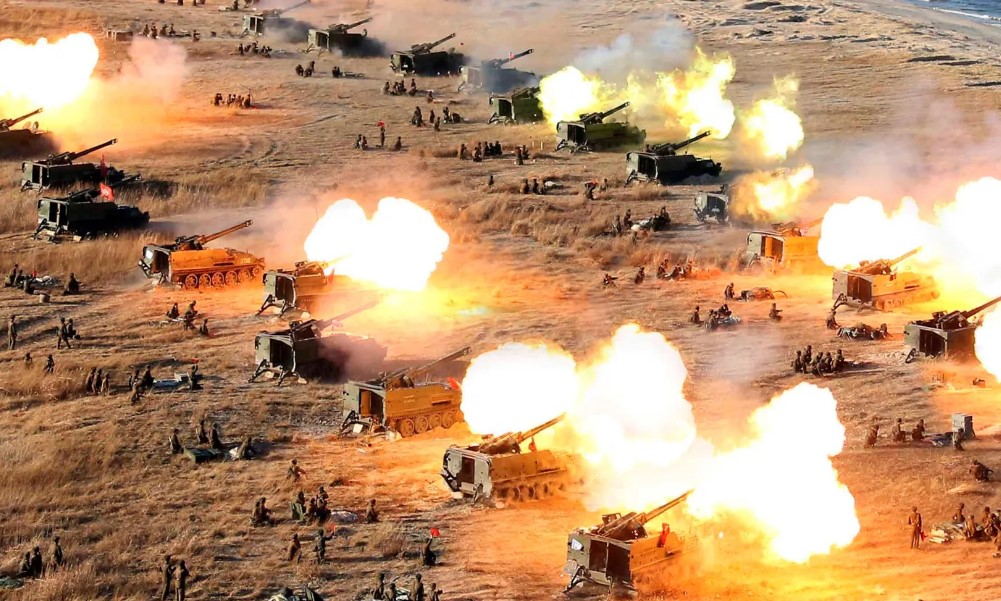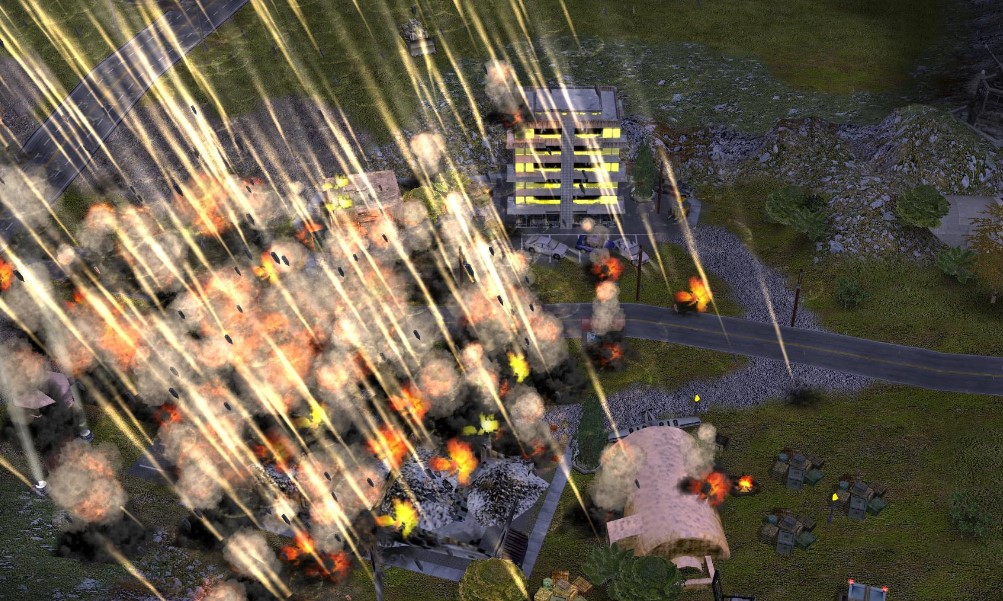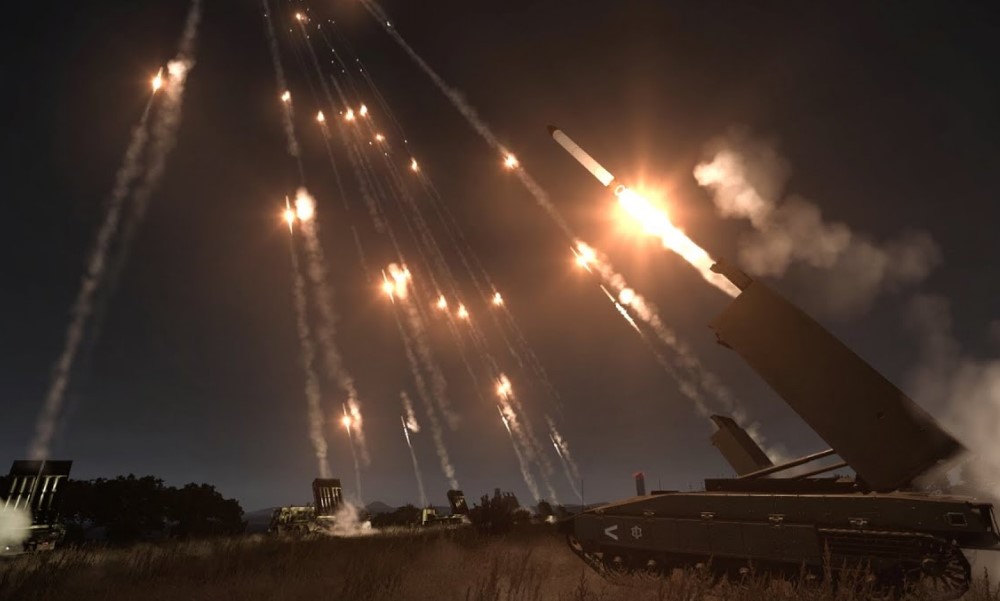Artillery barrages have been a fundamental component of military strategy for centuries, and their role in modern warfare is even more crucial with the advent of advanced technology. These bombardments involve launching a sustained attack on enemy positions using powerful artillery systems to weaken defenses, destroy critical infrastructure, and pave the way for infantry or armored assaults. In this comprehensive guide, we will explore the top artillery barrage products, their key features, benefits, and how they can be acquired.
What is an Artillery Barrage?

An artillery barrage refers to a continuous, concentrated artillery bombardment aimed at a specific area over a period of time. The purpose is to degrade enemy capabilities by targeting key positions such as fortifications, troop concentrations, and supply lines. This tactic creates disarray among enemy forces, enabling friendly forces to advance with reduced resistance. Artillery barrages have evolved significantly over time, and modern systems incorporate cutting-edge technology for improved accuracy, range, and mobility.
The success of an artillery barrage depends heavily on the quality of the equipment used, including the artillery pieces, targeting systems, and ammunition. These tools allow military forces to achieve their objectives with precision and effectiveness, making artillery a vital part of any large-scale military operation.
Key Features of Artillery Barrage

An artillery barrage is a tactical military maneuver that involves concentrated artillery fire over a specified area. Its purpose is to neutralize enemy defenses, disrupt operations, and create openings for advancing troops. In modern warfare, artillery barrages have become more sophisticated, leveraging advanced technology for precision, mobility, and destructive capability. Below are the key features of an artillery barrage that contribute to its effectiveness:
1. Massive Firepower
The primary feature of any artillery barrage is its ability to deliver overwhelming firepower. Artillery pieces such as howitzers, multiple launch rocket systems (MLRS), and self-propelled guns can deliver hundreds of rounds per minute, saturating a target area with explosions. This high volume of fire is critical in softening enemy positions, making it difficult for defenders to mount an effective resistance.
- Feature: High volume of fire with rapid delivery of shells or rockets.
- Example: The BM-30 Smerch can fire up to 12 rockets, each capable of hitting targets over a wide area.
2. Long-Range Capabilities
Modern artillery systems can engage targets at distances of up to 40 kilometers or more, making them essential for long-range bombardments. These extended ranges allow for striking enemy positions that are far beyond the reach of other battlefield assets, giving commanders the ability to hit high-value targets deep behind enemy lines.
- Feature: Extended range, up to 40 kilometers for some systems.
- Example: The PzH 2000 self-propelled howitzer can strike targets over long distances with impressive accuracy.
3. Precision Targeting
Advancements in fire-control systems and GPS-guided munitions have greatly improved the accuracy of artillery barrages. Precision targeting reduces collateral damage and ensures that rounds land exactly where intended, making it more effective against fortified positions or key installations.
- Feature: Advanced targeting systems using GPS and other sensors.
- Example: The M777 Howitzer, equipped with GPS-guided rounds, can hit targets with pinpoint accuracy, even at long distances.
4. Mobility
Modern self-propelled artillery units like the CAESAR Howitzer are mounted on vehicles, allowing them to reposition quickly. This mobility is crucial in dynamic battlefields where artillery units need to avoid counter-battery fire or adapt to shifting enemy positions.
- Feature: Rapid mobility for quick deployment and repositioning.
- Example: The CAESAR can be deployed, fire, and relocate within minutes, making it highly adaptable in fast-moving conflicts.
5. Versatility of Ammunition
Artillery systems can fire a variety of ammunition types, including high-explosive (HE) rounds, smoke rounds, and guided munitions. This versatility allows artillery units to perform multiple roles, from direct destruction of enemy forces to creating smoke screens or laying down suppressive fire.
- Feature: Ability to use a wide range of munitions for different tactical roles.
- Example: The M109A6 Paladin can fire HE rounds for destruction and smoke rounds for concealment.
Top 5 Artillery Barrage Systems in Modern Warfare

1. M777 Howitzer
The M777 Howitzer is one of the most widely used lightweight artillery pieces in modern warfare. Developed by BAE Systems, this 155mm towed howitzer is known for its exceptional range, accuracy, and ease of transportation. It can be deployed rapidly by helicopter, ship, or ground vehicles, giving it a significant advantage in mobility over heavier artillery systems.
- Use Case: Ideal for mobile military units operating in rugged terrain where rapid deployment and high accuracy are needed.
- Advantages:
- Lightweight and highly mobile
- Capable of precise long-range bombardments
- Can be transported via airlift, making it versatile in both offensive and defensive operations
- Disadvantages:
- Requires a well-trained crew for efficient operation
- Towed, which may limit its speed of repositioning in dynamic combat environments
- Price: $2.5 million per unit
- Where to Buy: The M777 Howitzer is available through military contracts with defense manufacturers like BAE Systems.
This system has been a game-changer for forces such as the U.S. Marine Corps and Army, as well as allied nations, due to its ability to provide heavy firepower while maintaining mobility on the battlefield.
2. CAESAR Self-Propelled Howitzer
The CAESAR Self-Propelled Howitzer, developed by Nexter Systems in France, offers unmatched speed and flexibility on the battlefield. Mounted on a 6×6 truck chassis, this 155mm howitzer can be deployed quickly and with minimal setup, providing rapid-fire artillery support in highly mobile warfare scenarios. It combines the firepower of a traditional artillery piece with the speed and mobility of a vehicle, making it a key asset for modern mechanized units.
- Use Case: Best suited for rapid deployment forces and situations where speed and mobility are critical.
- Advantages:
- High mobility due to its truck-mounted design
- Rapid-fire capability, allowing for quick artillery strikes and fast repositioning
- Minimal crew requirements, reducing logistical strain
- Disadvantages:
- Offers less protection compared to tracked self-propelled howitzers
- Limited to roads and moderate off-road conditions
- Price: $6 million per unit
- Where to Buy: The CAESAR Howitzer is available through defense contractors such as Nexter Systems.
The CAESAR has been adopted by several European and Asian militaries, demonstrating its effectiveness in fast-paced military operations where traditional artillery would be too slow or cumbersome.
3. PzH 2000 Self-Propelled Howitzer
The PzH 2000, developed by Krauss-Maffei Wegmann, is one of the most advanced and powerful self-propelled howitzers in the world. This German-made 155mm artillery system is known for its long-range, rapid-fire capability, and high level of protection for its crew. It can fire up to 10 rounds per minute with high precision, making it a formidable asset in any artillery barrage.
- Use Case: Ideal for sustained fire missions and operations requiring heavy artillery support over long periods.
- Advantages:
- High rate of fire (up to 10 rounds per minute)
- Excellent crew protection, with heavy armor
- Long-range capabilities (up to 40 kilometers with standard ammunition)
- Disadvantages:
- Heavy and less mobile compared to wheeled systems like the CAESAR
- High operational costs due to maintenance and fuel consumption
- Price: $7 million per unit
- Where to Buy: Available through military procurement from Krauss-Maffei Wegmann.
The PzH 2000 is a key artillery piece for several NATO forces, including Germany and the Netherlands, where its rapid-fire capabilities have proven essential in both defensive and offensive operations.
4. M109A6 Paladin
The M109A6 Paladin is a tracked, self-propelled artillery system used by the U.S. military. The Paladin is a significant upgrade over earlier versions of the M109, with improvements in firepower, mobility, and crew protection. It provides continuous, on-demand fire support, making it ideal for sustained military campaigns that require consistent artillery presence.
- Use Case: Suitable for long-term artillery support missions where continuous fire is needed.
- Advantages:
- Advanced targeting and fire-control systems
- High mobility for a tracked vehicle, allowing for fast repositioning
- Strong armor protection for crew survivability
- Disadvantages:
- Higher maintenance and operational costs compared to towed or wheeled systems
- Requires a larger logistical footprint due to fuel and ammunition needs
- Price: $4.5 million per unit
- Where to Buy: The M109A6 Paladin is produced by BAE Systems and available through U.S. military contracts.
The M109A6 Paladin continues to be a critical part of U.S. Army operations, particularly in areas requiring sustained and heavy artillery fire over extended periods.
5. BM-30 Smerch Multiple Launch Rocket System
The BM-30 Smerch, also known as the “Tornado,” is a Soviet-designed multiple launch rocket system (MLRS) that can deliver a devastating volume of fire over a wide area. It is capable of firing 300mm rockets with a range of up to 90 kilometers, making it one of the most powerful MLRS in the world.
- Use Case: Best for large-scale bombardment of enemy formations, infrastructure, and supply lines.
- Advantages:
- Massive firepower, capable of saturating a large area with rockets
- Long-range strike capabilities, allowing for deep bombardments
- Can carry different types of warheads, including cluster munitions and high-explosive warheads
- Disadvantages:
- Slow reload times and requires significant logistical support for sustained operations
- Lack of precision compared to modern guided artillery systems
- Price: $3 million per unit
- Where to Buy: The BM-30 Smerch can be acquired through Russian defense suppliers or licensed international defense contractors.
The BM-30 Smerch has been used in numerous conflicts where area saturation and large-scale destruction were needed, particularly in battles that require suppression of enemy forces over a wide area.
Comparison Table: Best Artillery Barrage Products
| Product | Use Case | Advantages | Disadvantages | Price | Features |
|---|---|---|---|---|---|
| M777 Howitzer | Mobile artillery for rough terrain | Lightweight, accurate, long-range | Requires trained crew | $2.5M | Towed, lightweight |
| CAESAR Howitzer | Rapid deployment and mobility | High mobility, rapid fire | Limited armor protection | $6M | Wheeled, self-propelled |
| PzH 2000 | Sustained fire missions | High fire rate, long-range, protected | Heavy and less mobile | $7M | Tracked, rapid fire |
| M109A6 Paladin | On-demand artillery support | High firepower, advanced systems | Higher maintenance costs | $4.5M | Tracked, self-propelled |
| BM-30 Smerch | Area bombardment, long-range strikes | Massive firepower, long-range | Requires logistical support | $3M | Multiple launch rocket system |
Benefits of Using Advanced Artillery Systems
The use of modern artillery systems offers significant strategic and operational benefits in military conflicts. Here are some of the key benefits:
- Increased Precision: Modern artillery systems like the M777 Howitzer and PzH 2000 are equipped with advanced targeting and fire-control systems that ensure precise strikes, reducing collateral damage.
- Enhanced Mobility: Systems like the CAESAR Howitzer and M109A6 Paladin are highly mobile, allowing for rapid repositioning on the battlefield. This mobility ensures that artillery units can quickly respond to changing tactical situations.
- Massive Firepower: The BM-30 Smerch MLRS delivers overwhelming firepower across a wide area, making it ideal for saturating enemy positions and creating chaos in enemy ranks.
- Sustained Operations: Self-propelled systems like the PzH 2000 and M109A6 Paladin are designed for sustained fire missions, allowing for continuous artillery support during extended operations.
How to Buy and Where to Buy Artillery Systems
Artillery systems like those mentioned above are not commercially available and must be purchased through military procurement channels. Military organizations typically engage in contracts with defense contractors or government-to-government sales to acquire these systems.
Here are some of the top suppliers for artillery systems:
- BAE Systems: Manufacturer of the M777 Howitzer and M109A6 Paladin.
- Nexter Systems: Producer of the CAESAR Self-Propelled Howitzer.
- Krauss-Maffei Wegmann: Supplier of the PzH 2000.
To purchase artillery systems, military forces must initiate a procurement process, which often involves competitive bidding, government approval, and long-term contracts.
FAQs
1. What is the primary purpose of an artillery barrage?
An artillery barrage is used to destroy enemy defenses, disrupt supply lines, and weaken enemy forces before an infantry or armored assault.
2. Which artillery system is the most mobile?
The CAESAR Howitzer is one of the most mobile artillery systems due to its wheeled, truck-mounted design, which allows for rapid deployment and repositioning.
3. What artillery system is best for long-range bombardments?
The BM-30 Smerch Multiple Launch Rocket System is best for long-range bombardments, with a range of up to 90 kilometers.
4. How do I purchase an artillery system?
Artillery systems must be purchased through military procurement agencies and defense contractors. Systems like the M777 Howitzer and PzH 2000 are available through companies like BAE Systems and Krauss-Maffei Wegmann.
5. Why are artillery systems crucial in modern warfare?
Artillery systems provide overwhelming firepower, precision, and the ability to strike enemy positions from long distances, making them essential for both offensive and defensive military operations.